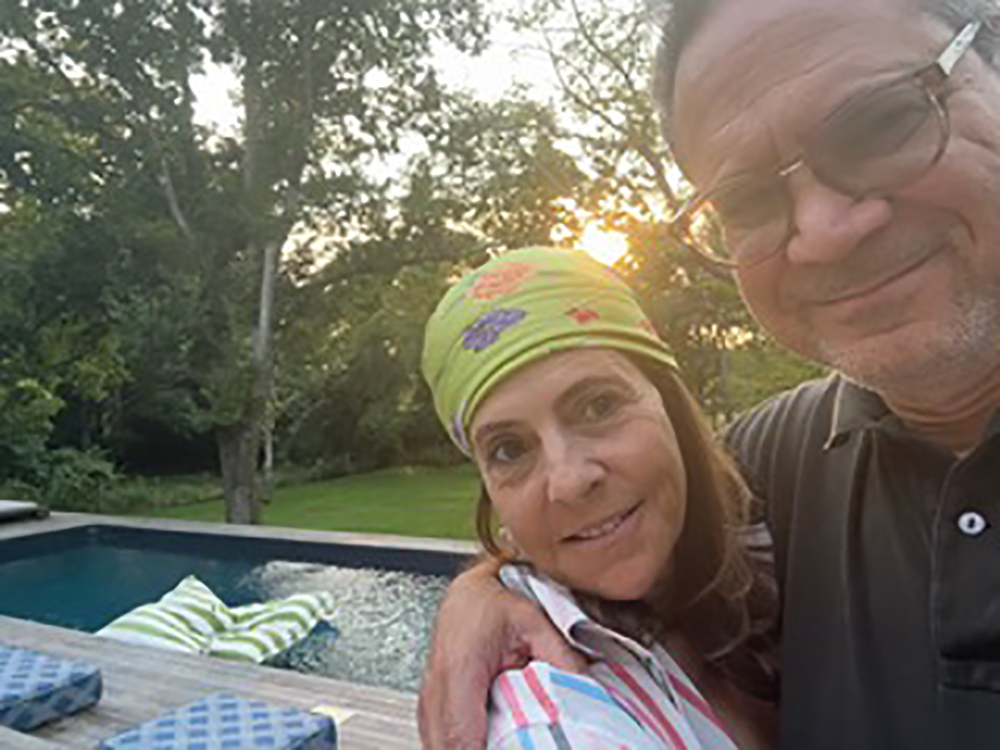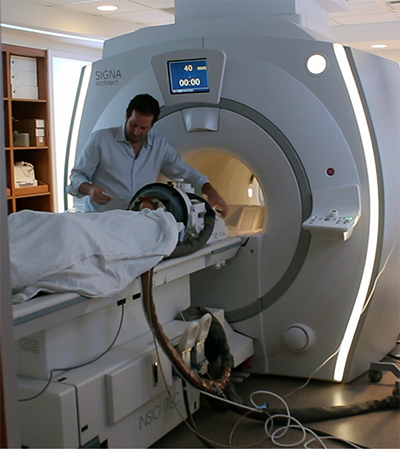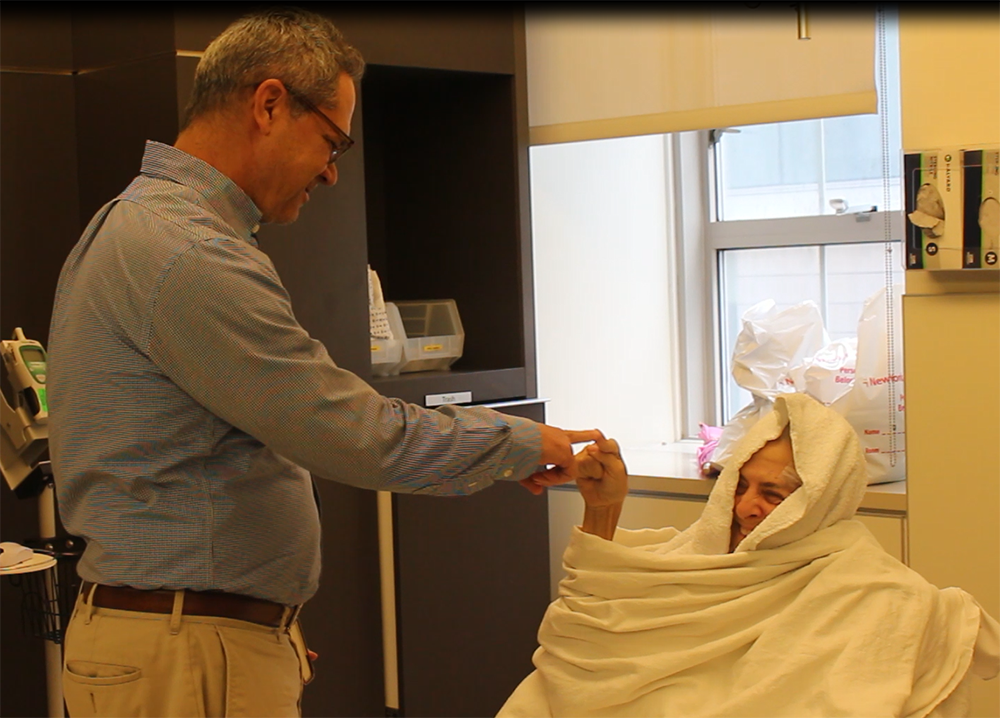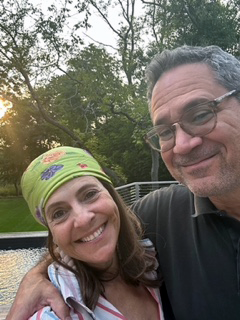
A lot has happened for Alexandra Lebenthal in the past seven years. In 2016 she became our first patient treated with MRI-guided focused ultrasound (FUS) after the FDA approved it for essential tremor. Since then, she and her husband, Jay, have moved to a new apartment; two of their three children have graduated from college, and the third — a middle-schooler in 2016 — is now a college sophomore. Most importantly, Alexandra has grown happily accustomed to having her dominant (left) hand be steady for the first time since her childhood. The innovative procedure worked well, and seven years later Alexandra is still over the moon about the improvement.
When the FDA approved focused ultrasound for use on the second side of the brain earlier this year, Alexandra was ready to do it again, and once again she called on Dr. Michael Kaplitt, Professor of Neurological Surgery and Director of the Movement Disorders service at Weill Cornell Medicine Neurological Surgery. Dr. Kaplitt had been one of the pioneers in using FUS for ET, and in the seven years since he first treated Alexandra he has become highly experienced in the procedure. He is one of the top experts in the country in its use for ET, and he currently performs half a dozen of the procedures a month; he is now testing it for use on patients with the tremors of Parkinson’s disease as well.

Dr. Kaplitt prepares Alexandra Lebenthal for her second-side treatment
“We’ve come a long way,” Dr. Kaplitt says now. “Seven years ago we were still required to keep patients overnight after a procedure, but it soon became clear that it was not necessary. Patients now leave the hospital shortly after the procedure – they are here for a few hours and go home either without a tremor or with it greatly reduced. We also have a lot more experience in performing the procedure, and can achieve excellent results in less time than we once needed.”
Alexandra was delighted that her 7 am appointment would have her on her way home by lunchtime, although she was less than happy to undergo that haircut again. (The technology requires a completely shaved scalp in order to conduct the ultrasound waves into the brain. Hair grows back, of course, but it can be stressful to lose your locks.)
Keeping her eye on the prize, Alexandra submitted to the shave knowing that the results would be more than worth it. Her non-dominant (right) side tremor had grown more pronounced in the past few years and she was eager to have it treated. She also knew she was in the hands of a master for her haircut – Dr. Kaplitt shaves each patient himself to make sure the results are perfect.
Less than an hour after the preparation began, Alexandra was in the MRI suite being readied for the procedure. She drew her baseline spiral – her jagged attempt to follow a simple line was made impossible by her tremor – and then was ready for the first pulse of ultrasound. After each of four pulses Dr. Kaplitt asked her to try the spiral test again. In less than an hour, the fourth spiral looked good and the treatment was complete. Moments after leaving the MRI scanner, Alexandra lifted a paper cup to her lips – a simple act that had eluded her for decades.

These simple lines tell the story of progress: From the baseline at left to the final drawing at right, each pulse of focused ultrasound improved the patient's control over her hand

Bundled up against the chill of the recovery room, Alexandra gave her husband an emotional fist bump with her newly calmed right hand. Then, even more remarkably, through tears of joy, Alexandra touched her index finger to his with near-perfect control. Her ET had been banished.

Alexandra Lebenthal took this remarkably unremarkable selfie, as well as the one at the top of this page, a week after her FUS procedure... using her right hand!
“I’ve spoken to so many people about the first procedure,” says Alexandra. “It was life-changing to have it done, and I’m happy to share my experiences with them. This time, having the second side done, knowing that it will be the first time in my life that I’ll have two steady hands – I can’t wait to start talking about it again!”